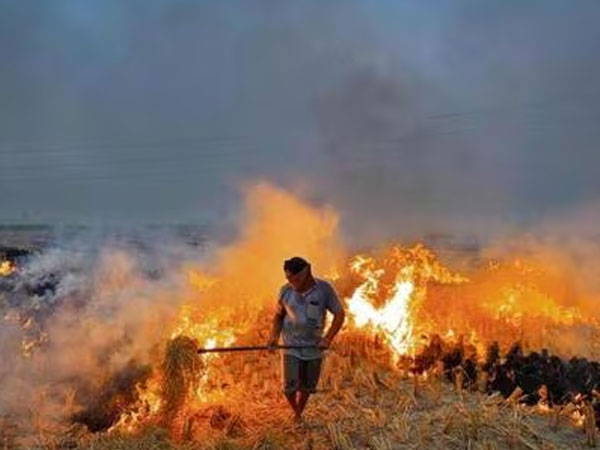 This year’s tally of 415 incidents is significantly lower than the figures for the corresponding period in previous years — 1,510 in 2024 and 1,764 in 2023
This year’s tally of 415 incidents is significantly lower than the figures for the corresponding period in previous years — 1,510 in 2024 and 1,764 in 2023
Punjab has recorded a 72% decline in paddy stubble fire incidents as compared to last year’s count during the same period. On Tuesday, the state reported 62 new farm fire cases, taking the total to 415.
According to the Punjab Pollution Control Board (PPCB), Tarn Taran recorded the highest number of farm fires at 136, followed closely by Amritsar with 120.
This year’s tally of 415 incidents is significantly lower than the figures for the corresponding period in previous years — 1,510 in 2024 and 1,764 in 2023.
Last year, Punjab reported a total of 10,909 farm fire incidents with Sangrur topping the list at 1,725 cases.
31% area under paddy harvested so far
Farm fire incidents typically surge in mid-October as farmers prepare their fields for wheat sowing after paddy harvesting. The PPCB monitors stubble burning every year from September 15 to November 30, coinciding with the harvesting season.
Experts attribute the lower number of incidents this year to delayed paddy harvesting caused by untimely rainfall in the first week of October. According to PPCB data, only 31.58% of the 31.72 lakh hectares under paddy cultivation have been harvested so far.
While Amritsar and Tarn Taran have crossed the 50% mark in harvesting, progress remains below 35% in Patiala, Barnala, Bathinda, Ludhiana, Sangrur, Mansa, and Ferozepur — all in the Malwa region, which contributes the most to stubble burning due to its high-yield paddy cultivation.
“Paddy is harvested earlier in the Majha region, but this year, flood damage delayed the process. As a result, the numbers are low. Moreover, farm fire incidents have been gradually declining each year,” said a senior PPCB official, requesting anonymity.
Strict monitoring and action helped
Strict monitoring by the Punjab government and the PPCB has also helped reduce incidents this season.
Officials said 152 “red entries” had been made in land records of violators, barring them from securing loans or selling and mortgaging their farmland. The state has imposed environmental compensation worth ₹8.05 lakh across 162 cases, of which ₹5.65 lakh has been recovered.
Punjab Police have registered 149 FIRs against farmers for burning stubble this season, including 61 FIRs in Tarn Taran alone.
The state government has also issued show-cause notices to 172 nodal officers over the cases of stubble burning.
Not to blame for Delhi AQI: Farmers
Amid the blame game over Delhi’s deteriorating air quality, Punjab farmers have rejected allegations that stubble burning is the primary cause of pollution in the national capital.
Jagmohan Singh, the general secretary of Bharatiya Kisan Union, Dakaunda, said, “Scientific studies have already shown that stubble burning contributes only 6%-8% to Delhi’s air pollution. This year, the number of farm fires has already declined by 75%. The BJP should stop demonising Punjab’s farmers.”
Earlier in the day, BJP IT cell chief Amit Malviya blamed AAP chief and former Delhi CM Arvind Kejriwal for failing to curb stubble burning in Punjab, where the Aam Aadmi Party was in power.
“Unless Kejriwal–ruled Punjab stops burning stubble, Delhi and NCR will continue to choke. Stop blaming Deepawali for the sins of the Aam Aadmi Party — it’s their smoke, not the festival’s lamps or firecrackers, that darkens Delhi’s skies,” Malviya posted on X. His remarks came as the air quality in Delhi dipped sharply after Monday night’s Diwali festivities, with fireworks continuing beyond the Supreme Court’s permitted two-hour window.
Reacting to the BJP’s allegations, farmer leader Sarwan Singh Pandher said, “Statistics and studies show that farmers’ contribution to pollution is less than 6%. Despite this, the BJP continues to put the entire blame on us. Amit Malviya is known for spreading lies. Delhi’s AQI remains poor even when farmers stop burning stubble in December.”













© Copyright 2025 The SSResource Media.
All rights reserved.